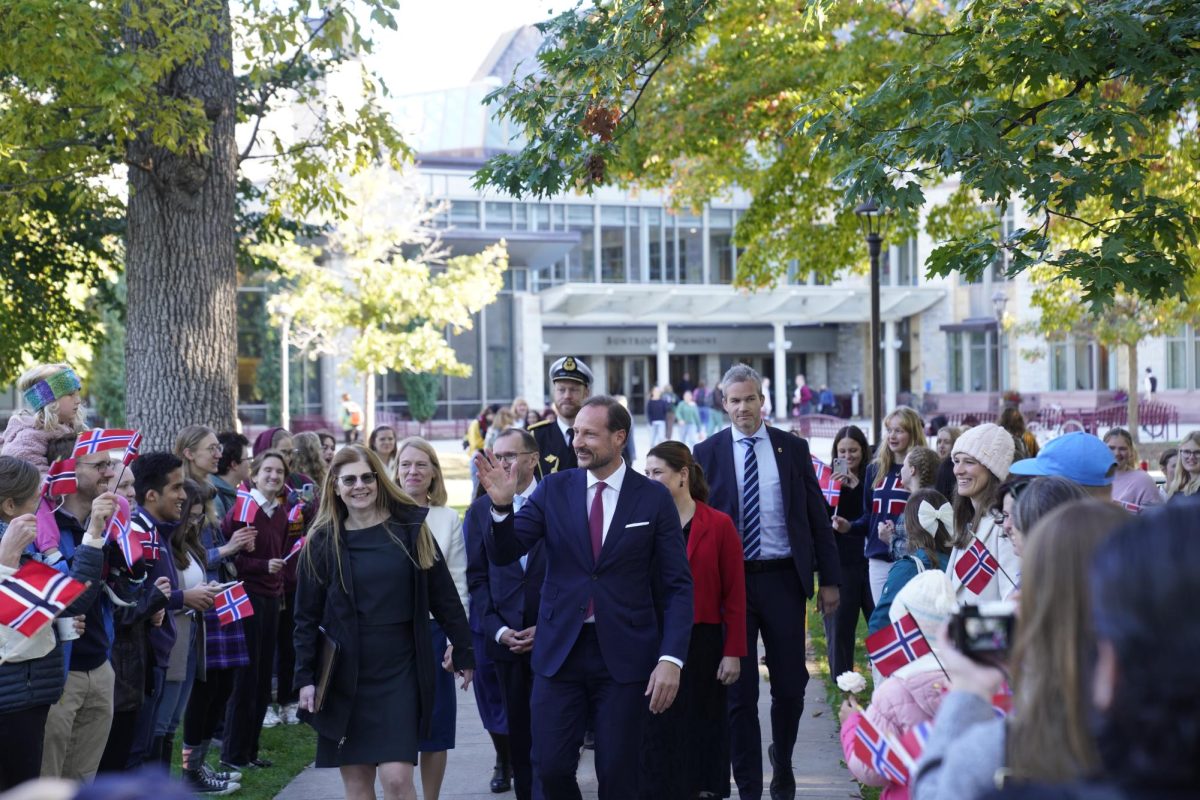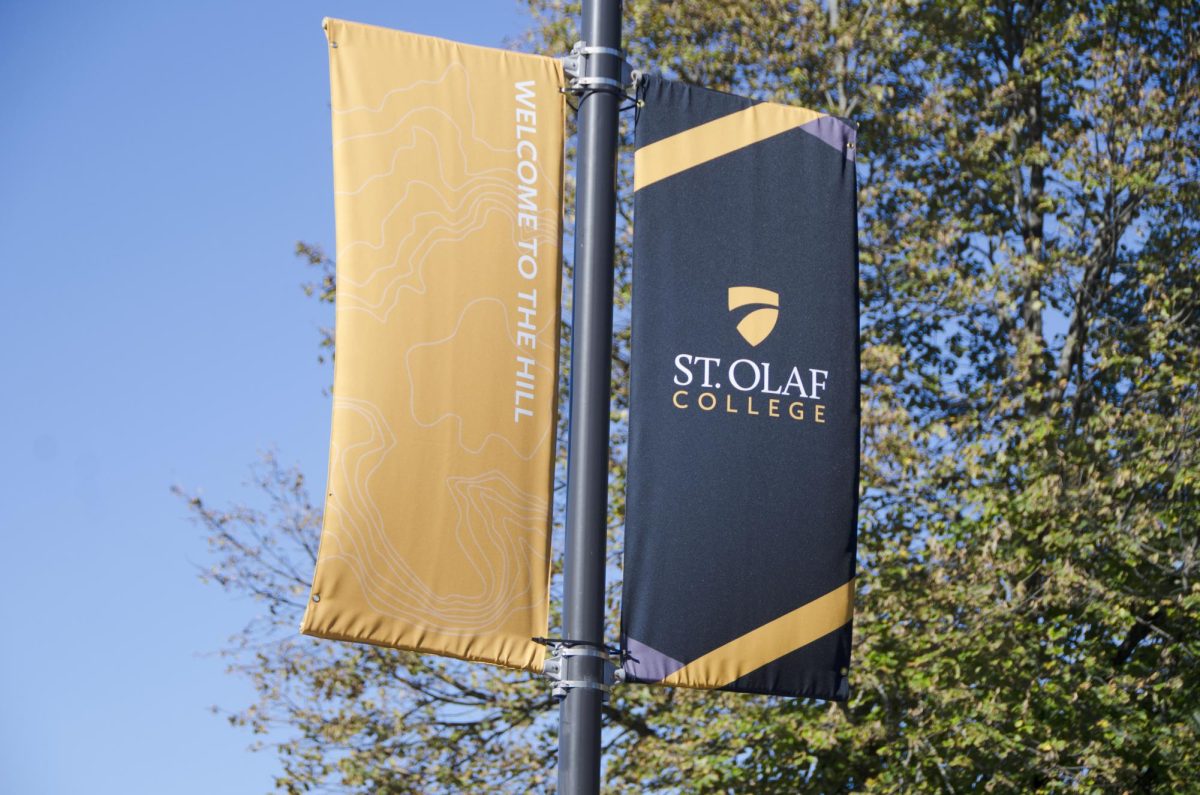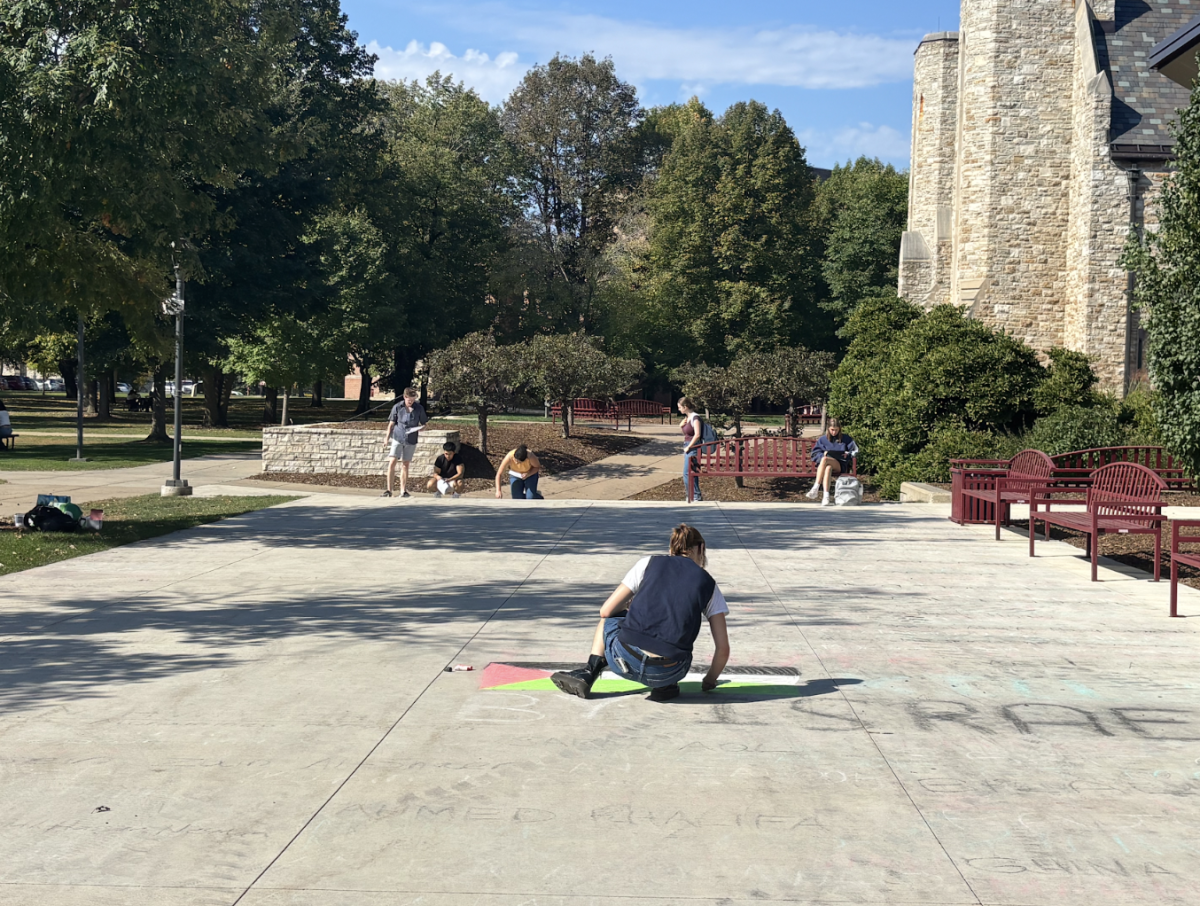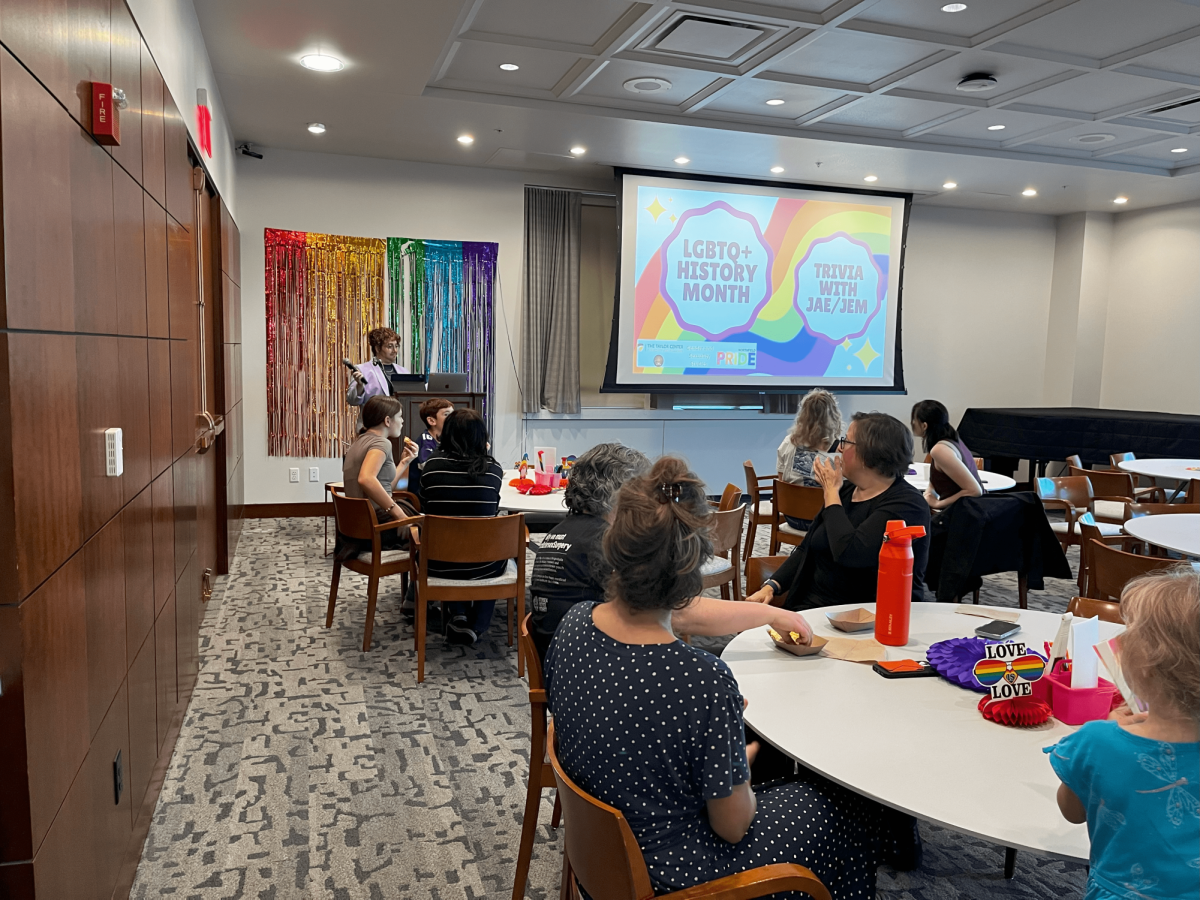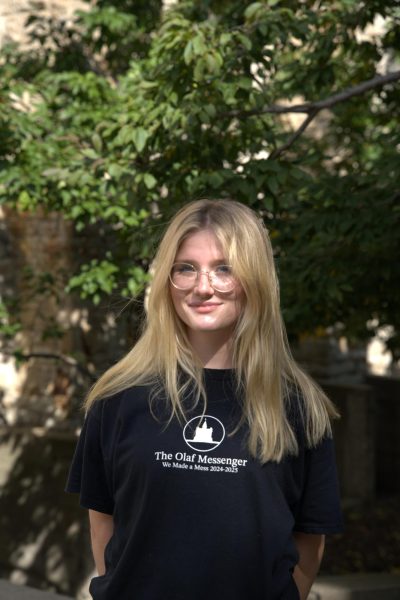Outside St. Olaf’s Center for Art and Dance (CAD), a field of election signs stretches across the grassy lawn, decorating the area with political names — some recognizable, some not. Unlike most yard signs seen during election cycles, however, these names do not signal victory or hope, but rather are markings of what could have been.
This piece of public artwork, “Monument to the Unelected” by Nina Katchadourian, showcases the names of every major-party U.S. presidential candidate who ran and lost. Coinciding with the Flaten Art Museum’s “Practicing Democracy” exhibit, the installation invites reflection on the democratic process. On view until Nov. 24, the display features 59 signs in total and is the first to be installed in Minnesota, one of seven host sites across the U.S. After the results of this election are revealed, a first-time voter will install the 60th sign with the names of the losing candidates.
Since its inception, the piece has been displayed in public spaces, museums, galleries, and uniquely, on the front lawns of private homes. St. Olaf is the only college campus hosting the exhibit this year..
This is in large part thanks to the Director of FAM, Jane Becker Nelson, who, according to Katchadourian, was in contact with the artist since Oct. 2023. “You know how museums work, you plan on all your exhibitions at least two, if not three or four years in advance,” said FAM Interim Collections Manager Margaret Lindahl. “So when thinking about the election, especially… what if we had something else?”
And something else they had. “Monument to the Unelected” is eye-catching by nature, especially paired with its ties to everyday-life and the spontaneity with which it was installed and introduced to students. Additionally, the artwork is public — not stuck in the confines of a gallery, something FAM has rarely explored before.
“I think it’s very important for pieces like this to be public and not to be in a gallery space because there’s kind of an a sense of decorum [in galleries],” Lindahl said, “… but for a piece like this, it kind of loses some energy if it’s not in the public sphere, because you would have to choose to go to Gallery to see it. In this way you can [see it] when you’re just walking around campus.”
According to Lindahl, removing the “intentional choice” of a viewer to go and see a piece of art and instead have them stumble upon the work causally creates more room for conversation, even if it is intentionally confusing.
“It’s sort of quite brave to start with a piece that is deliberately a slightly confusing piece of work,” Katchadourian said.
But, as Katchadourian explains, the confusion created by the piece is an essential aspect to processing and understanding it. “That is the way that ‘Monument to the Unelected’ operates. It is meant to take you by surprise. It’s meant to be question provoking, and you’re not supposed to know exactly what is going on when you see,” Katchadourian said.
If one thing is certain about the piece, however, it is that it is not meant to be political. “It’s not political. It’s about politics,” Lindahl said. “I think ‘Monument [to the Unelected]’ is a cool piece to be in conjunction with an exhibition like Practicing Democracy because Nina’s piece is not necessarily political. There’s no endorsement, there’s no like, ‘this is what I believe.’ It’s more of just like, ‘Hey, these are people who lost it.’”
FAM student curatorial assistant Anika James ’25 admires this aspect of the piece as well. She acknowledges that it is easy to view this politically intense moment as the most intense it has ever been.
“I think, while that’s true in many other ways, this exhibit and this piece really speaks to the fact that we’ve always been very always been very concerned about what’s going on in politics,” James said.
James also feels that “Monument to the Unelected” puts into perspective that there haven’t been that many elections. After all, 59 is not really that high of a number. “I hope it gives people some hope that, like, regardless of which way it turns out, like there will be another election, there will always be another way forward.”
